Buy Getting the PIQ-ture Assessing and Treating Common Pediatric Patients – Michelle Fryt Linehan Course at GBesy. We actively participate in Groupbuys and are committed to sharing knowledge with a wider audience. Rest assured, the quality of our courses matches that of the original sale page. If you prefer, you can also buy directly from the sale page at the full price (the SALEPAGE link is directly provided in the post).
Getting the PIQ-ture Assessing and Treating Common Pediatric Patients by Michelle Fryt Linehan,
Salepage link: At HERE. Archive:
- Faculty:
- Michelle Fryt Linehan
- Duration:
- 5 Hours 42 Minutes
- Format:
- Audio and Video
- Copyright:
- Feb 25, 2013
Description
Evaluation and Treatment Plans for Common Pediatric Musculoskeletal and Movement Problems
With the rising incidence of cerebral palsy, survival of the tiniest premature infants, and the increased incidence of torticollis, any professionals working with children in an inpatient, outpatient, school, or home environment will undoubtedly be asked to assess and treat children with movement and neuromuscular disorders. A diagnosis of “cerebral palsy” or “developmental delay” is very general and professionals who are asked to treat a child with one of these or other general diagnoses must have a good understanding of the evaluation tools and treatment options that will guide the provision of an individualized, safe, and effective program for each child.
This recording will help attendees choose the best assessment tool (standardized and non-standardized) for each patient and get a comprehensive picture of the patient by using an orderly approach for general observations (PIQ-ture). Goal-setting and treatment ideas will be discussed for each type of patient, noting differences between “evidence-based” treatment ideas and standard protocols used. Leave with many hands-on ideas that can be used immediately in the practice setting, as well as numerous resources and ideas for further study.
Handouts
| Manual – Getting the PIQ-ture (4.03 MB) | 193 Pages | Available after Purchase |
Outline
ASSESSMENT OF CHILDREN
- Issues with evaluation of children
- Lois Bly’s Motor Skills Acquisition Check List
- What to evaluate
- Choosing an evaluation tool
- Commonly used norm-referenced tools for general motor skill assessment
- Bayley Scales of Infant Development
- Peabody Developmental Motor Scales
- Movement ABC
- Bruininks-Oseretsky Test of Motor Performance
- Re-evaluation with standardized assessments
- Commonly used criterion-reference pediatric assessment tools
- gross motor function measure (88 and 66)
- school function assessment
- goal attainment scale
- Gathering other pertinent information
- five senses
- the use of PIQ (Posture in Positions, Initiations and Inhibitions, Quality and Quantity)
- Evaluation components
- strength chart
- gait analysis
- Treatment planning
- use of left vs. right brain thinking
- PT/OT diagnoses vs. medical diagnoses
TORTICOLLIS
- Definition and incidence
- Causes
- Changes in developmental milestones with Back to Sleep
- Evaluation
- PIQ
- cranial measurements
- range of motion
- motor evaluation
- Intervention Ideas
- positioning
- range of motion
- case study
PREMATURITY
- Definition, incidence, morbidity, causes
- Long term sequella
- Dynamic systems theory
- Evaluation – subjective and objective information
- complications, feeding, physical aspects
- PIQ
- standardized assessments
- Intervention
- parental education
- supine vs. prone
- frequency, location
- case study
HYPOTONIA
- Definition and clinical characteristics
- Causes
- non-neurological
- central
- peripheral
- Weakness vs. joint laxity vs. low tone
- Assessing children with low tone
- INFANIB
- movement assessment of infants
- gross motor function measure
- PIQ
- range of motion
- sensation and perception – proprioception
- Intervention strategies—moving from diagnosis to treatment
- task analysis + noted impairments → treatment
- chart with treatment ideas
- Patricia Winder’s book
- case study
HYPERTONIA
- Definition and incidence
- spasticity vs. hypertonia
- classification system for cerebral palsy
- Assessing children with tone disorders
- past medical history
- orthopedic issues
- standardized assessments
- PIQ
- causes of in-toeing
- Ryder’s test
- strength, balance, sensation/perception
- Treatment ideas
- strengthening for children with hypertonia
- whole body vibration plate
- NDT
- constraint-induced movement therapy
- taping, stretching, NMES vs. TES
- Adaptive equipment
- PBWB
- standers
- orthotics
- Case study using chart for single goal
Faculty
Michelle Fryt Linehan, MSPT, PCS, MEd, Related seminars and products: 3
Michelle Fryt Linehan, MSPT, PCS, MEd, is a licensed physical therapist and APTA Pediatric Certified Specialist with over 26 years of experience working with children in both rehab and educational settings. Currently she works in an outpatient facility in Spokane, Washington, and owns her own practice, Kinetic Kids Physical Therapy, treating children in Idaho. Ms. Linehan previously worked in the field of education, both in the United States and in Africa, as a teacher and state-level administrator for a total of 13 years. She has spent the last 18 years working as a pediatric physical therapist in a variety of settings: hospital acute care, outpatient, school systems, and early intervention programs. Ms. Linehan also previously owned a pediatric physical therapy practice in Georgia, seeing children in their natural environments.
Ms. Linehan received a bachelor’s degree in Elementary Education from the University of Colorado at Colorado Springs in 1980, obtained a master’s degree in Early Childhood Special Education from the University of Washington in Seattle in 1987, and in 1993 she earned her MSPT from Boston University. Ms. Linehan completed the NDT/Bobath 8-week Pediatric course in 1999 and became a Pediatric Certified Specialist through the American Physical Therapy Association in 2002. She has also earned certifications in Threshold Electrical Stimulation and Infant Behavior Assessment. Ms. Linehan views “Evidence-Based Practice” as a necessary aspect of her clinical practice and continually strives to seek effective ways to provide physical therapy services to all of her patients.
Speaker Disclosures:
Financial: Michelle Fryt Linehan maintains a private practice. She receives a speaking honorarium from PESI, Inc.
Non-financial: Michelle Fryt Linehan is a member of the American Physical Therapy Association.
Buy the Getting the PIQ-ture Assessing and Treating Common Pediatric Patients – Michelle Fryt Linehan course at the best price at GBesy.. After your purchase, you will get access to the downloads page. You can download all the files associated in your order at here and we will also send a download notification email via your mail.
Unlock your full potential with Getting the PIQ-ture Assessing and Treating Common Pediatric Patients – Michelle Fryt Linehan courses. our courses are designed to help you excel.
Why wait? Take the first step towards greatness by purchasing Getting the PIQ-ture Assessing and Treating Common Pediatric Patients – Michelle Fryt Linehan courses today. We offer a seamless and secure purchasing experience, ensuring your peace of mind. With our trusted payment gateways, Stripe and PayPal, you can confidently complete your transaction knowing that your financial information is protected.
Stripe, known for its robust security measures, provides a safe and reliable payment process. With its encrypted technology, your sensitive data remains confidential throughout the transaction. Rest assured that your purchase is protected.
PayPal, a globally recognized payment platform, offers an additional layer of security. With its buyer protection program, you can feel confident in your purchase. PayPal ensures that your financial details are safeguarded, allowing you to focus on your learning journey.
Is it secure? to Use of?
- Your identity is completely confidential. We do not share your information with anyone. So it is absolutely safe to buy the Getting the PIQ-ture Assessing and Treating Common Pediatric Patients – Michelle Fryt Linehan course.
- 100% Safe Checkout Privateness coverage
- Communication and encryption of sensitive knowledge
- All card numbers are encrypted using AES at relaxation-256 and transmitting card numbers runs in a separate internet hosting atmosphere, and doesn’t share or save any data.
How can this course be delivered?
- After your successful payment this “Getting the PIQ-ture Assessing and Treating Common Pediatric Patients – Michelle Fryt Linehan course”, Most of the products will come to you immediately. But for some products were posted for offer. Please wait for our response, it might take a few hours due to the time zone difference.
- If this happens, please wait. The technical department will process the link shortly after. You will receive notifications directly by e-mail. We appreciate your wait.
What Shipping Methods Are Available?
- You will receive a download link in the invoice or YOUR ACCOUNT.
- The course link always exists. use your account to login and download the Getting the PIQ-ture Assessing and Treating Common Pediatric Patients – Michelle Fryt Linehan course whenever you need.
- You only need to visit a single link, and you can get all the Getting the PIQ-ture Assessing and Treating Common Pediatric Patients – Michelle Fryt Linehan course content at once.
- You can do your learning online. You can be downloaded for better results and can study anywhere on any device. Make sure your system does not sleep during the download.
How Do I Track Order?
- We always notice the status of your order immediately after your payment. After 7 days if there is no download link, the system will automatically complete your money.
- We love to hear from you. Please don’t hesitate to email us with any comments, questions and suggestions.
![GBesy [GB] GBesy [GB]](https://www.gbesy.com/wp-content/uploads/2023/05/gbesy-Logo-full-100.png)
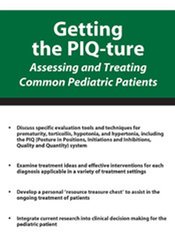


 Purchase this course you will earn
Purchase this course you will earn 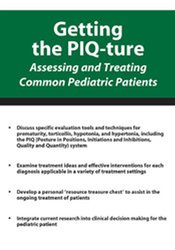
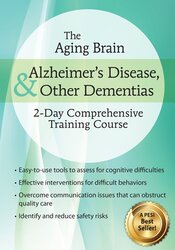
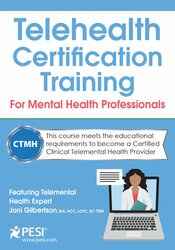

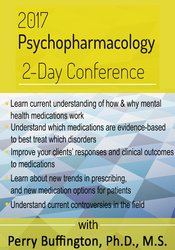
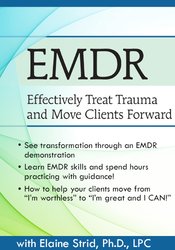

Reviews
There are no reviews yet.